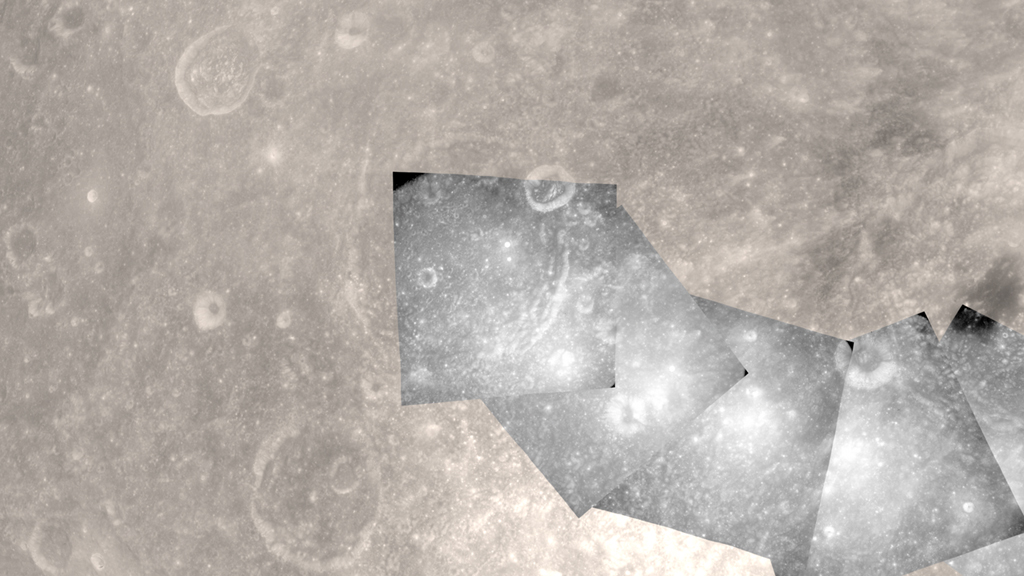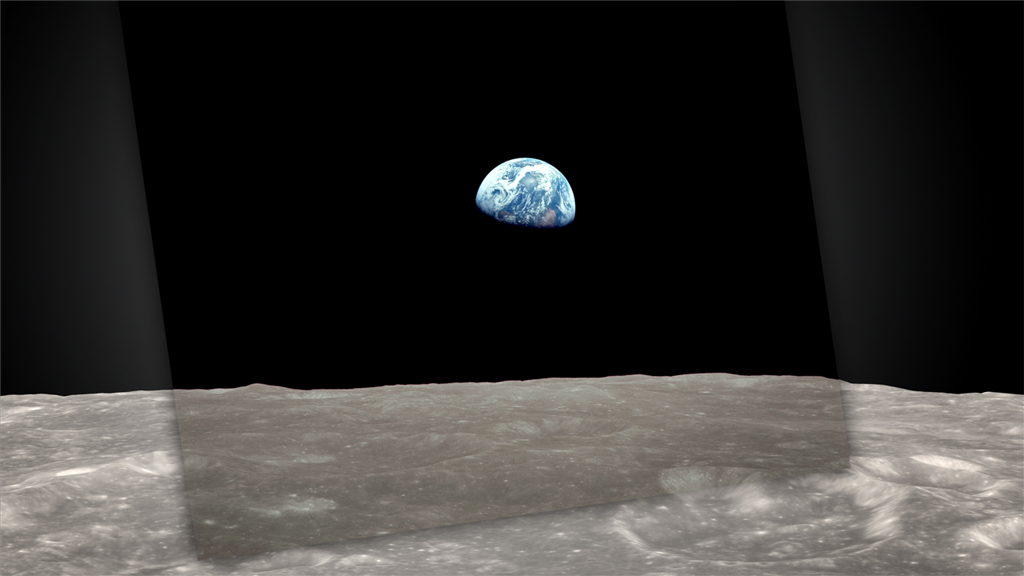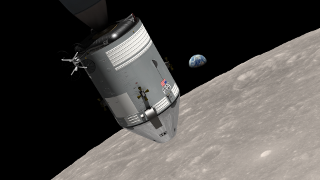Planets and Moons
ID: 11430

In December 1968, the crew of Apollo 8 became the first humans to orbit the moon. But as NASA astronauts Frank Borman, James Lovell and William Anders all later recalled, the most important thing they discovered in space was Earth. Using data from NASA’s Lunar Reconnaissance Orbiter, the moment when the crew first saw and photographed Earth rising from behind the moon was recreated. The key to the new work is a set of images of the lunar surface captured by a camera mounted in the Apollo 8 Command Module's rendezvous window. By registering each image to a model of the moon’s terrain, the orientation of the spacecraft and window from which each photo of Earth was taken can now be known. Watch the video to learn more.



Making History




Source Material
For More Information
Story Credits
Lead Visualizer/Animator:
Ernie Wright (USRA)
Video Editor:
Dan Gallagher (USRA)
Narration:
Andrew Chaikin
Narrator:
Andrew Chaikin
Producers:
Dan Gallagher (USRA)
Ernie Wright (USRA)
Andrew Chaikin
Noah Petro (NASA/GSFC)
Lead Scientists:
John Keller (NASA/GSFC)
Noah Petro (NASA/GSFC)
Lead Writer:
Ernie Wright (USRA)
Ernie Wright (USRA)
Video Editor:
Dan Gallagher (USRA)
Narration:
Andrew Chaikin
Narrator:
Andrew Chaikin
Producers:
Dan Gallagher (USRA)
Ernie Wright (USRA)
Andrew Chaikin
Noah Petro (NASA/GSFC)
Lead Scientists:
John Keller (NASA/GSFC)
Noah Petro (NASA/GSFC)
Lead Writer:
Ernie Wright (USRA)
Please give credit for this item to:
NASA's Goddard Space Flight Center
NASA's Goddard Space Flight Center
Short URL to share this page:
https://svs.gsfc.nasa.gov/11430
Keywords:
DLESE >> Narrated
SVS >> App
NASA Science >> Planets and Moons
https://svs.gsfc.nasa.gov/11430
Keywords:
DLESE >> Narrated
SVS >> App
NASA Science >> Planets and Moons








